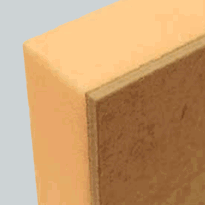Types of Load-Bearing Insulation Materials and Their Properties
Load-bearing insulation materials serve a dual purpose in construction by providing both thermal resistance and structural support within building components. Common types include rigid foam boards and cavity fill options, each selected for their specific properties.
Polyurethane foam insulation, a thermoset material available in closed-cell and open-cell forms, possesses high compressive strength and excellent durability, making it suitable for load-bearing applications. It also offers strong adhesion to different substrates, ensuring long-lasting performance.
Polystyrene foam insulation, made from synthetic petrochemicals, includes expanded (EPS) and extruded (XPS) types. XPS provides superior water resistance and structural stability, making it desirable for applications subject to moisture or load. In addition, it typically exhibits higher compressive strength compared to EPS.
Fibreglass insulation, manufactured from glass fibres, is less suited as a load-bearing material but is often utilised alongside load-bearing systems due to its affordability and versatility. It provides effective thermal insulation while supporting other structural elements.
Composite materials combine different types of insulation to enhance overall performance. However, manufacturing precision is critical to ensure these composites meet structural and thermal requirements effectively.
Understanding the specific properties of these materials allows builders and architects to select appropriate load-bearing insulation solutions tailored to the demands of each project, ensuring durability and energy efficiency within the UK’s climate.
Structural Load-Bearing Functions and Applications of Insulation
Structural load-bearing functions of insulation play a vital role in supporting various components of building and infrastructure projects by providing essential stability while also contributing to thermal management.
In buildings, load-bearing insulation supports foundations, helping to distribute structural loads and reduce thermal bridging that can weaken the insulation’s effectiveness. In walls, insulation blocks serve the dual purpose of supporting wall veneer materials and minimising heat transfer, which enhances overall efficiency. The choice of load-bearing insulation material is crucial for ensuring long-term performance and safety in these applications.
For roofing systems, insulation supports roof equipment and prevents thermal loss and condensation, thereby maintaining building integrity.
In infrastructure projects, insulation materials such as extruded polystyrene (XPS) prevent frost heave beneath roadways, airport runways, and rail lines, ensuring durability and safety.
Specialised products like foam glass or load-bearing blocks help ensure structural stability in demanding environments, reinforcing both safety and performance.
Thermal Performance and Efficiency Considerations
Thermal performance is a vital aspect when assessing the effectiveness of load-bearing insulation blocks, as they significantly contribute to reducing heat transfer within building envelopes. Selecting appropriate insulation materials is essential in minimising thermal bridging, which can reduce heating and cooling energy requirements by up to 30% and 20%, respectively. Enhancing energy efficiency is achieved through minimizing heat loss at junctions and reducing thermal bridges, thereby improving overall building thermal performance. Achieving compliance with stringent building standards is often facilitated through these solutions, helping to maintain consistent indoor temperatures and promote healthier living environments. Investing in effective thermal insulation offers long-term benefits, including substantial energy savings and improved property value. It also supports sustainable building practices by decreasing carbon footprints and reducing reliance on active heating and cooling systems. Ensuring optimal thermal performance not only results in increased occupant comfort but also provides ongoing financial advantages through lower energy bills and enhanced property valuation. Meeting evolving regulatory requirements and standards remains a key factor in the implementation of suitable insulation strategies, making it a crucial consideration for sustainable and cost-effective construction in the UK.
Factors to Consider When Selecting Load-Bearing Insulation Materials
Choosing the right load-bearing insulation materials requires a thorough assessment of their physical, chemical, environmental, safety, installation, cost, and availability characteristics.
Physically, materials should have sufficient compressive strength, density, and durability to support loads and resist deformation over time. In some situations, lighter options may be advantageous, provided they meet strength requirements. Industry-specific needs influence the robustness required in the selection process.
Chemically, resistance to moisture, chemicals, UV exposure, and corrosion is essential to prevent deterioration and ensure long-term performance in load-bearing applications.
From a safety perspective, it's important to verify that materials are flame retardant, non-toxic, and compliant with UK building standards. Low emissions of smoke or fumes are also significant for maintaining safety standards.
Installation considerations include ease of handling, sealing requirements, and compatibility with nearby materials. Proper installation ensures the insulation functions effectively and maintains structural integrity.
When evaluating costs, factors such as affordability, recyclability, total lifecycle expenses, and the reliability of supply play crucial roles. Selecting cost-effective materials that are sustainably sourced supports long-term building performance.
Conclusion
Selecting appropriate load bearing insulation requires careful evaluation of material properties, structural requirements, and thermal efficiency. Understanding the distinct functions of different insulation types ensures proper application and performance. By assessing factors such as strength, durability, and thermal conductivity, professionals can make informed decisions that bolster safety and energy efficiency in construction.
Precise material selection optimises structural integrity and long-term operational costs, emphasising the importance of thorough analysis in the insulation choice process.









































































































































































































































































































































































































































